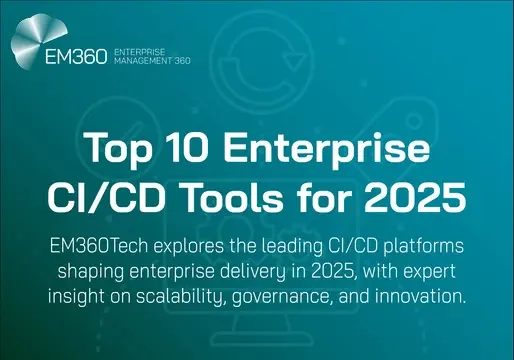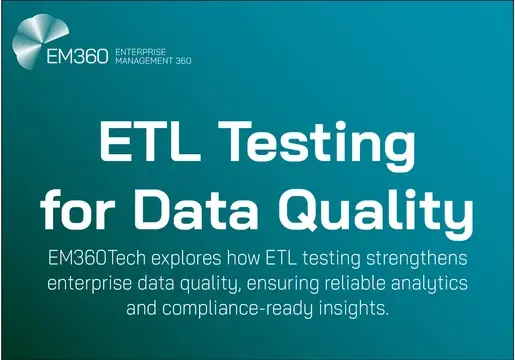Data management has never been more complex in 2024. Not only are organisations swimming in excessive amounts of data, but they also struggle to access crucial data assets that are central to the success of their business.
The problem is that data comes from all sorts of places – from databases to spreadsheets and the cloud. And often, this data isn't necessarily in the same format or location. This prevents organizations from finding the data they need, leading to as much as two-thirds of their data going untapped despite being crucial for discovering insights, driving innovation and solving key business challenges.
For organizations struggling to handle multiple data sources, data integration tools are proving crucial to keeping tabs on the valuable data at their disposal.

What is data integration?
Data integration is the process of combining data residing in different sources and providing a unified view of them. It means bringing all your data together from various locations and formats into a single, usable source.
The goal of data integration is to provide a unified and comprehensive dataset that you can use to quickly access the information you need, analyse trends, and identify insights that might otherwise remain hidden.
It gives you a complete and accurate view of your data, allowing you to improve decision-making, create new products and services and ensure that your data is accurate, up-to-date, and readily available at all times.
Data integration can also help organisations optimise their operations by identifying inefficiencies and areas for improvement. For example, an organisation might use data integration to track customer interactions and identify areas where the customer experience can be improved.
What are data integration tools?
Data integration tools are software applications that automate the data integration process of combining data from multiple sources and presenting it in a unified view.
They do this by unifying data from different data sources such as databases, spreadsheets, cloud storage, and even social media, providing a complete perspective of your operations, customers, or research.

This allows organizations to gain a deeper understanding of their data for data-driven decisions, enabling them to analyze trends, identify opportunities, and address challenges with a comprehensive view.
Types of data integration tools
There are a variety of different data integration tools available today, each of which caters to specific data volumes, processing needs, and desired levels of real-time functionality:
1. Extract, Transform, Load (ETL) Tools
ETL tools are software designed to automate and simplify the process of managing data flow between various sources and a target system, typically a data warehouse or data lake.
They do this by pulling data from multiple sources like databases, applications, flat files, and APIs and cleaning, filtering, and converting this data into a single view to ensure consistency and accuracy. They then load this data into the destination system, ready for analysis or reporting.
ETL tools are crucial for organizations that deal with data from a variety of different sources. They streamline data management by automating the data flow and ensuring the data is usable for analytics.
2. Extract, Load, Transform (ELT) Tools
ELT tools are similar to ETL tools but with a key difference in the order of their processes. Like ETL tools, pull data from various sources like databases, applications, and files, but then they load the extracted data into the target system, typically a data warehouse or data lake.
This can make them better than ETL tools for big data scenarios where processing large amounts of data upfront might be slow or resource-intensive, making the data integration process faster and more scalable but less accurate.
Read: ETL vs ELT: What’s the Difference?
After the data lands in the target system, ELT tools then clean, format, and transform it to a consistent and usable format. This can involve filtering, correcting errors, converting formats, and calculations.
3. Data Preparation Tools
Data preparation tools are software applications specifically designed to streamline the process of getting your data ready for analysis. Unlike ETL or ELT tools that handle data movement, data preparation tools primarily focus on cleaning, formatting, and transforming your data. This involves tasks like:
- Identifying and handling missing values: Data might have missing entries that need to be addressed (e.g., filling with averages, removing rows).
- Correcting errors: Inconsistent formatting, typos, or outliers can be identified and fixed.
- Standardizing formats: Data from different sources might have varying formats (dates, currencies, units) that need to be standardized for consistency.
- Deriving new features: You can create new data elements (features) based on existing data through calculations or transformations.
Many data preparation tools offer a visual, user-friendly interface that allows data analysts and business users with less technical expertise to clean and manipulate data without extensive coding.
Data preparation tools also often integrate seamlessly with popular data analysis and visualization tools, allowing for a smooth transition from data cleaning to analysis.
4. Data Migration Tools
Data migration tools are software applications designed to automate and simplify the process of moving large volumes of data between different storage systems, databases, applications, or platforms.
While some data migration tools focus solely on data movement, some offer built-in transformation capabilities as well, including filtering, cleaning, or converting data formats to ensure compatibility with the target system.
This connects to various source and destination systems, allowing you to extract data from one location and load it into another. They support a wide range of data formats and structures to handle diverse data types.
5. Data Integration Platforms (DIPs)
Data Integration Platforms (DIPs) are essentially orchestrators for your data movement needs. They're comprehensive solutions that provide a wide range of functionalities to seamlessly connect, consolidate, transform, and manage data from various sources.
DIPs come equipped with connectors that act as bridges to various data sources like databases, applications, files, and APIs, allowing them to extract data efficiently from disparate systems.
They go beyond simple data movement too, providing tools to transform data by cleaning, formatting, and standardizing it to ensure consistency and accuracy.
Unlike other types of data integration tools, DIPs allow you to define data mapping rules, which specify how data elements from different sources should be matched and transformed for a unified structure. They also enable you to build automated workflows that orchestrate the entire data integration process, streamlining data movement.
Best Data Integration tools
Choosing the best data integration tool depends on several factors, such as the type of data you are integrating, the volume and complexity of the data, the frequency of data updates, and your budget.
Here's a short list of ten of the best data integration tools available today based on their popularity with users, features and user reviews.








Comments ( 0 )